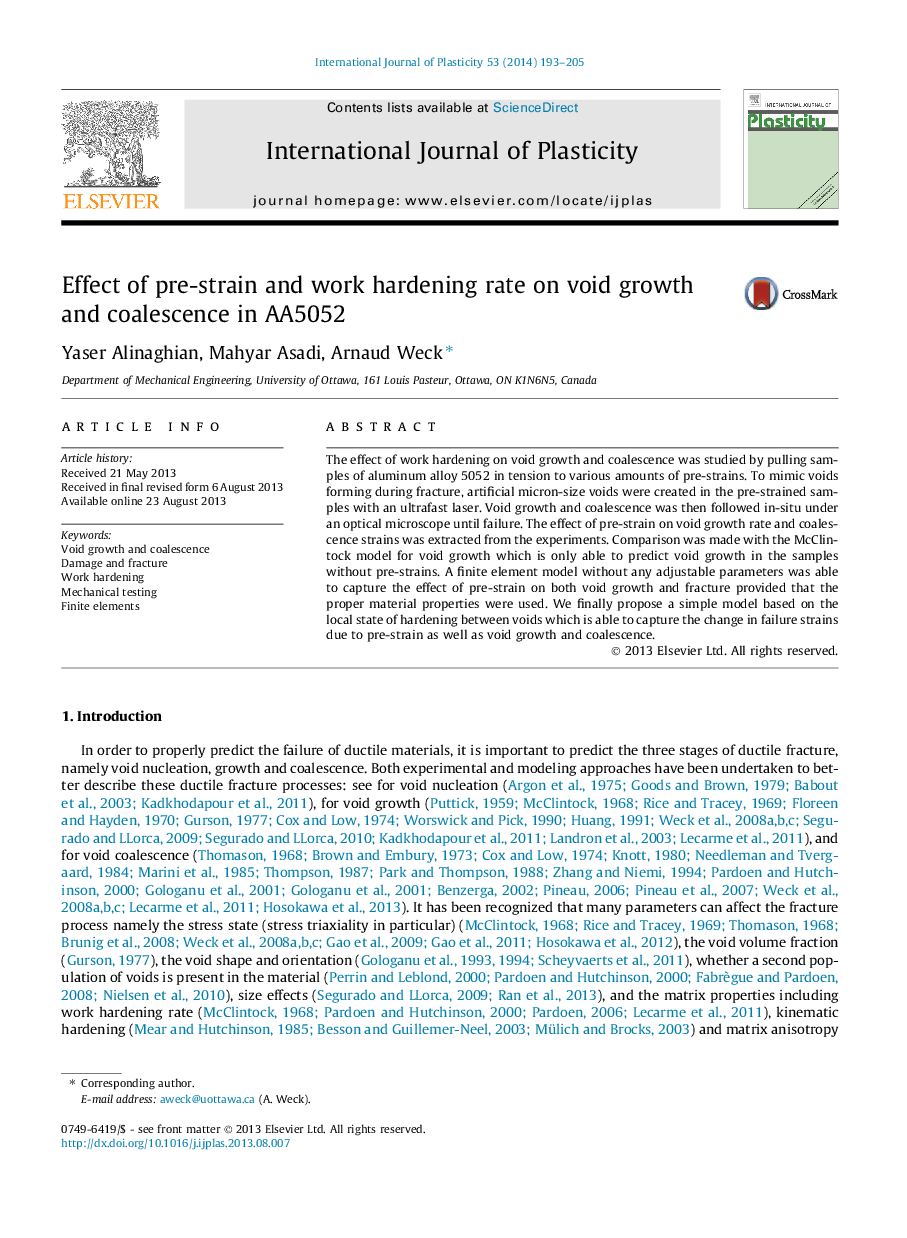| Article ID | Journal | Published Year | Pages | File Type |
|---|---|---|---|---|
| 786201 | International Journal of Plasticity | 2014 | 13 Pages |
•Pre-strained samples are tested to study the effect of work hardening on fracture.•The samples have laser micro-voids that mimic voids forming during fracture.•The McClintock model cannot predict the effect of pre-strain on void growth.•A simple finite element model predicts well void growth and fracture.•A new local hardening model is proposed for void growth, coalescence and fracture.
The effect of work hardening on void growth and coalescence was studied by pulling samples of aluminum alloy 5052 in tension to various amounts of pre-strains. To mimic voids forming during fracture, artificial micron-size voids were created in the pre-strained samples with an ultrafast laser. Void growth and coalescence was then followed in-situ under an optical microscope until failure. The effect of pre-strain on void growth rate and coalescence strains was extracted from the experiments. Comparison was made with the McClintock model for void growth which is only able to predict void growth in the samples without pre-strains. A finite element model without any adjustable parameters was able to capture the effect of pre-strain on both void growth and fracture provided that the proper material properties were used. We finally propose a simple model based on the local state of hardening between voids which is able to capture the change in failure strains due to pre-strain as well as void growth and coalescence.
Graphical abstractFigure optionsDownload full-size imageDownload as PowerPoint slide
